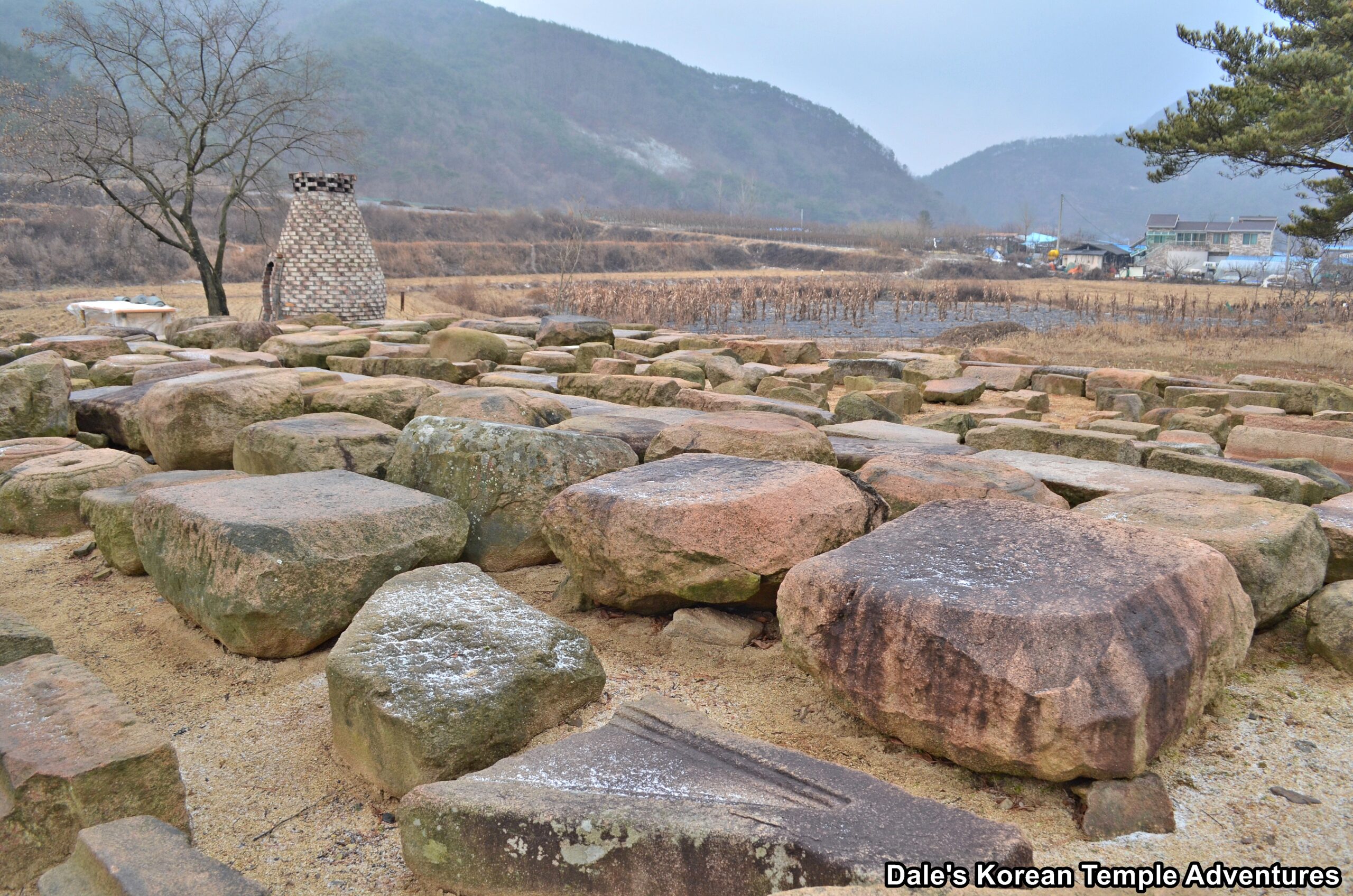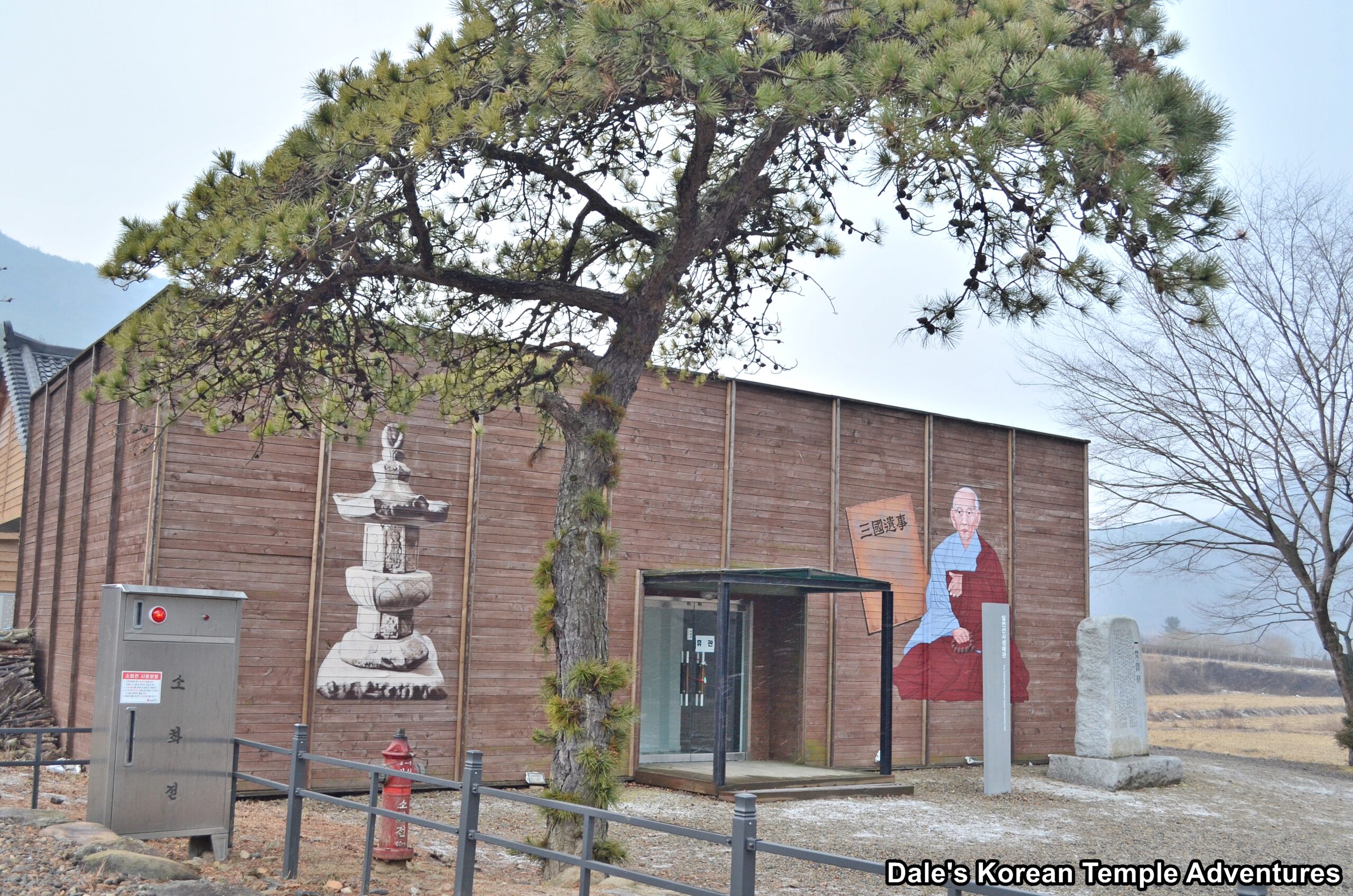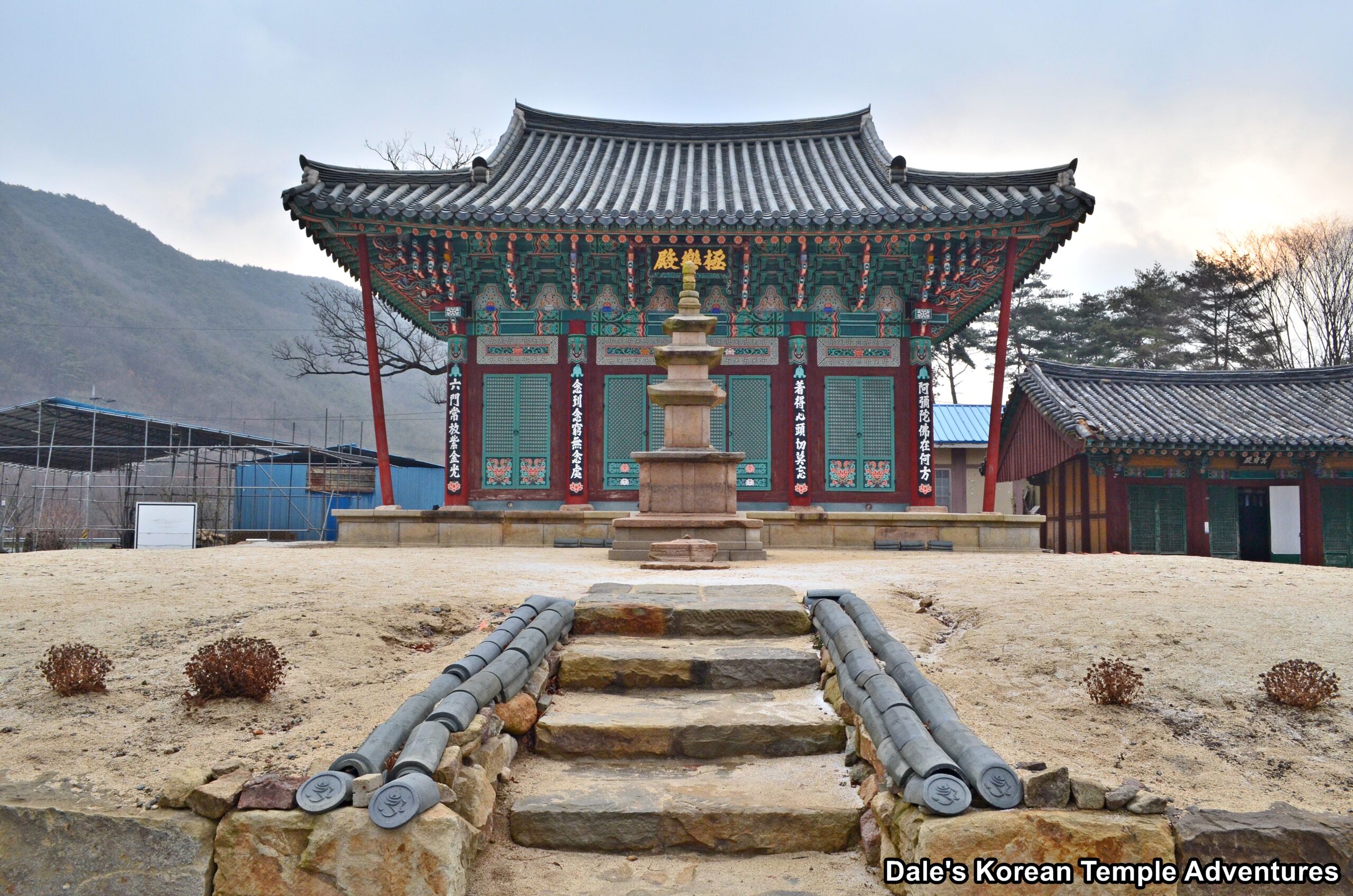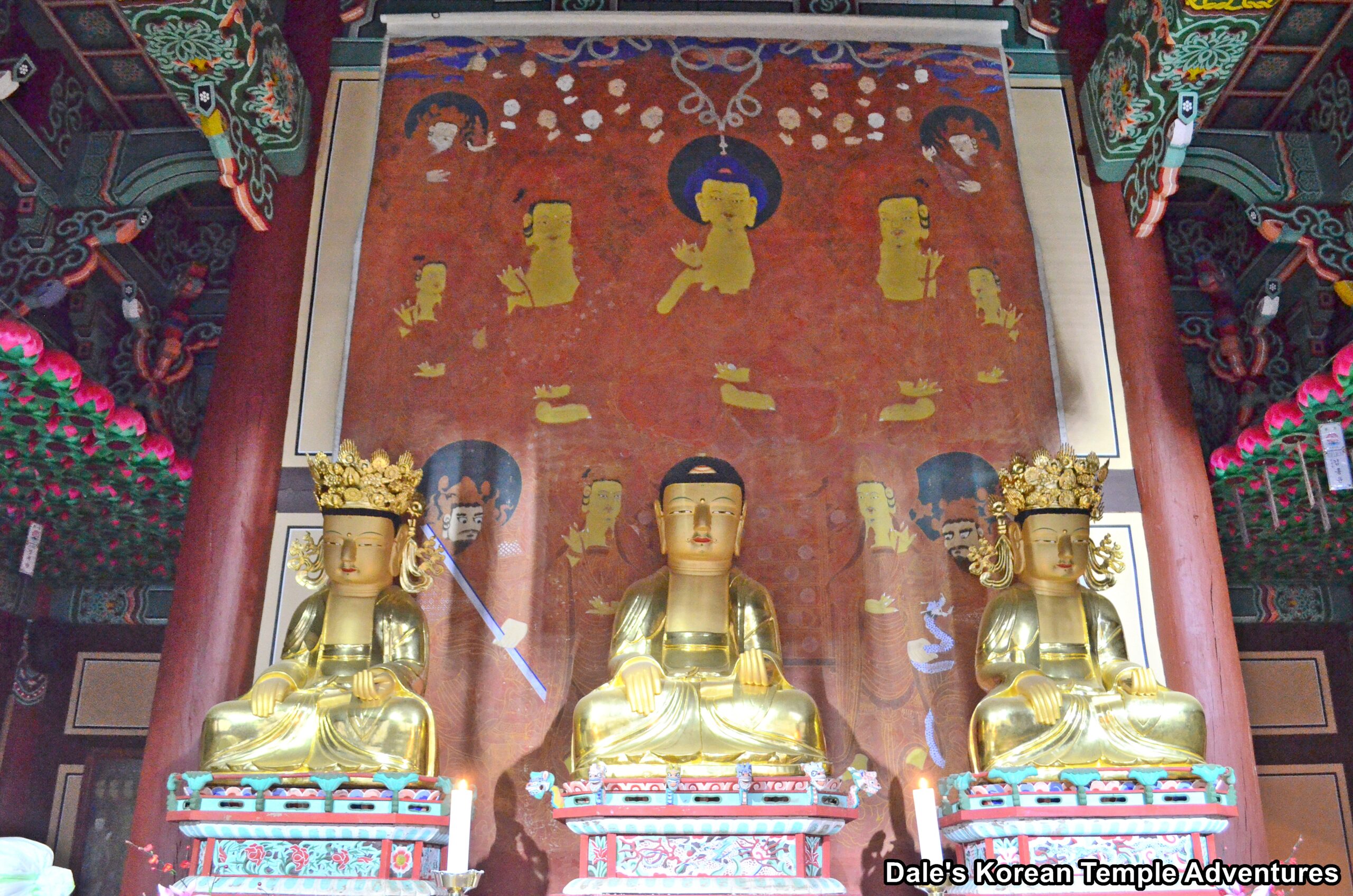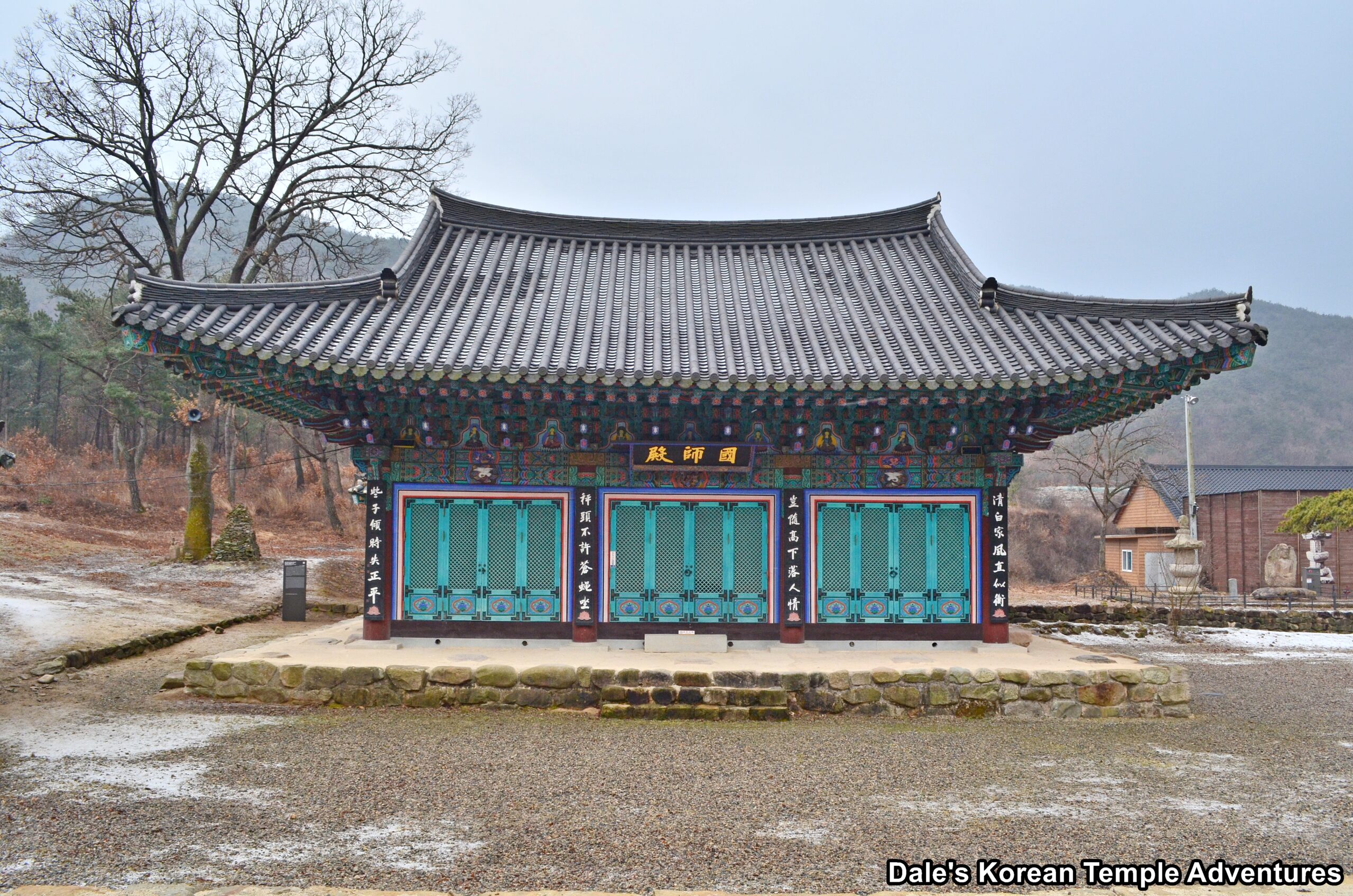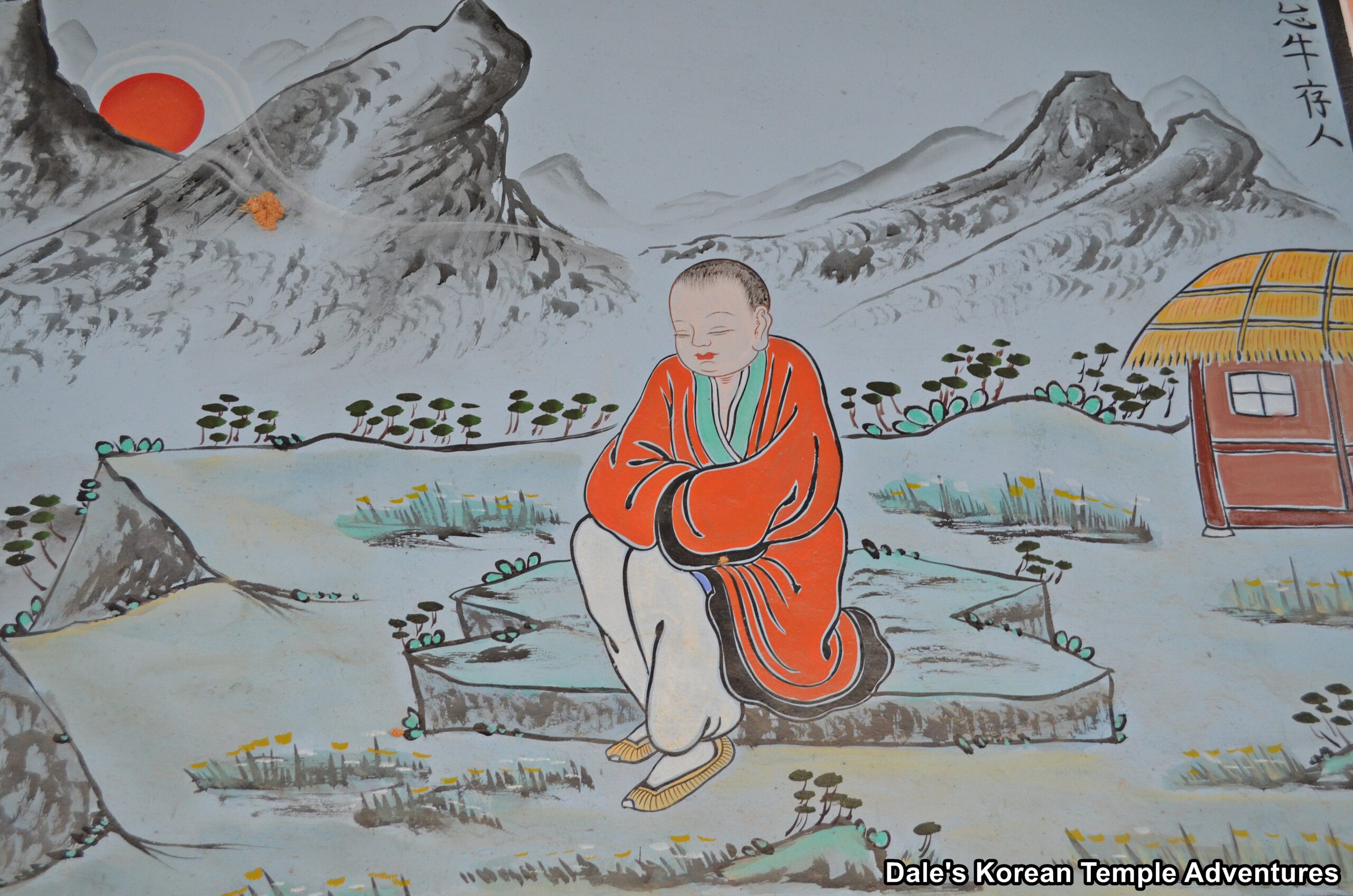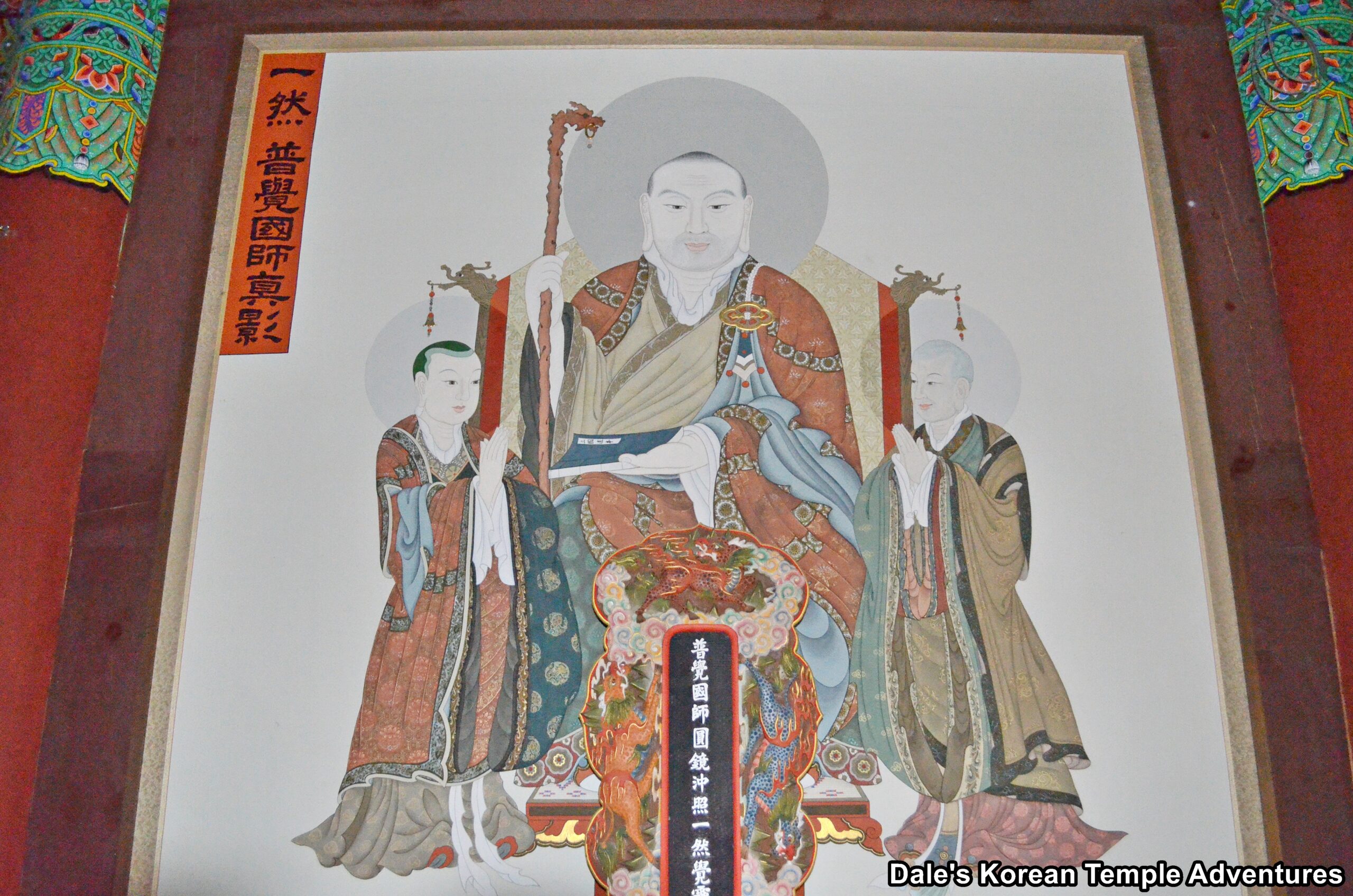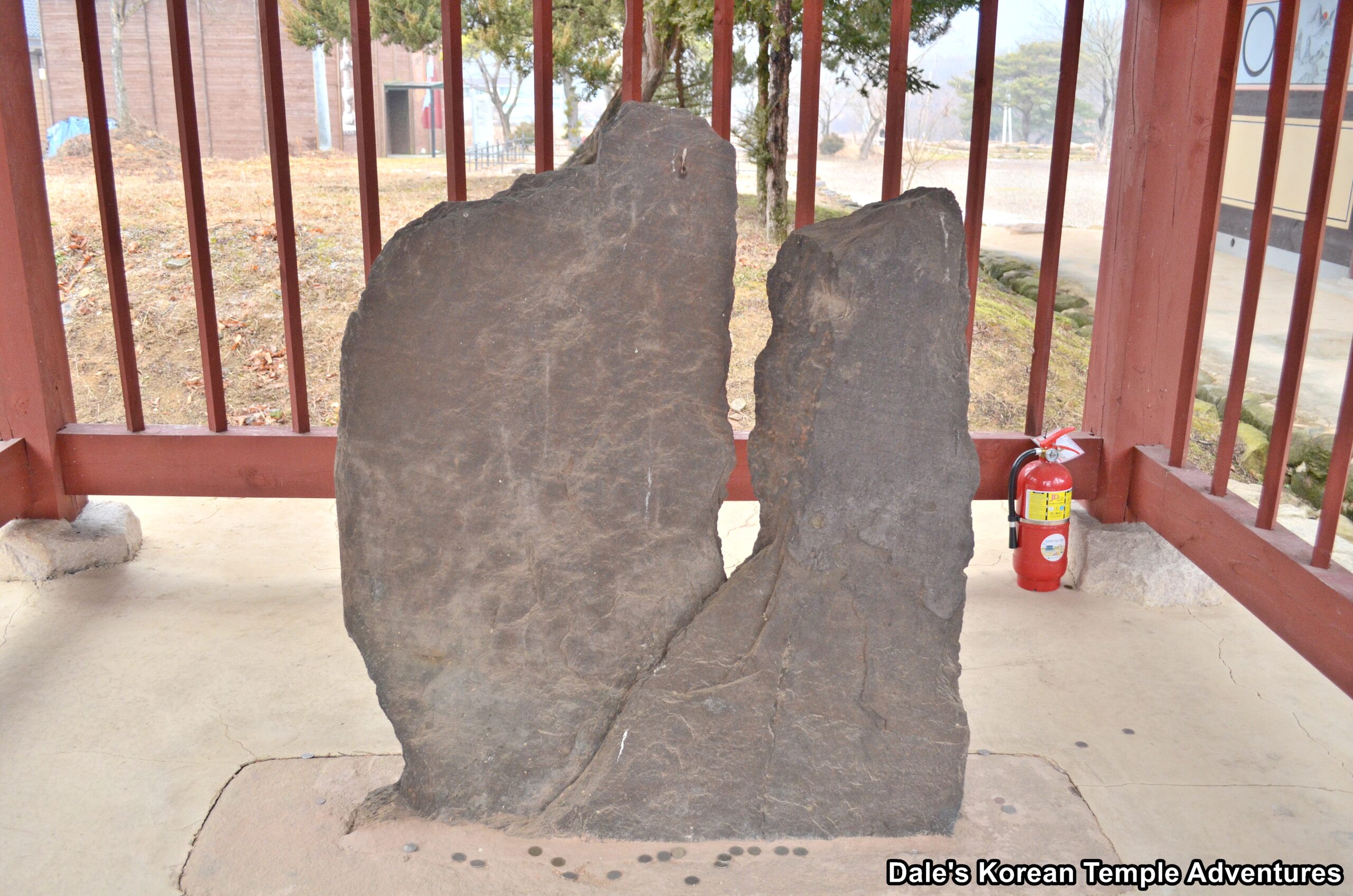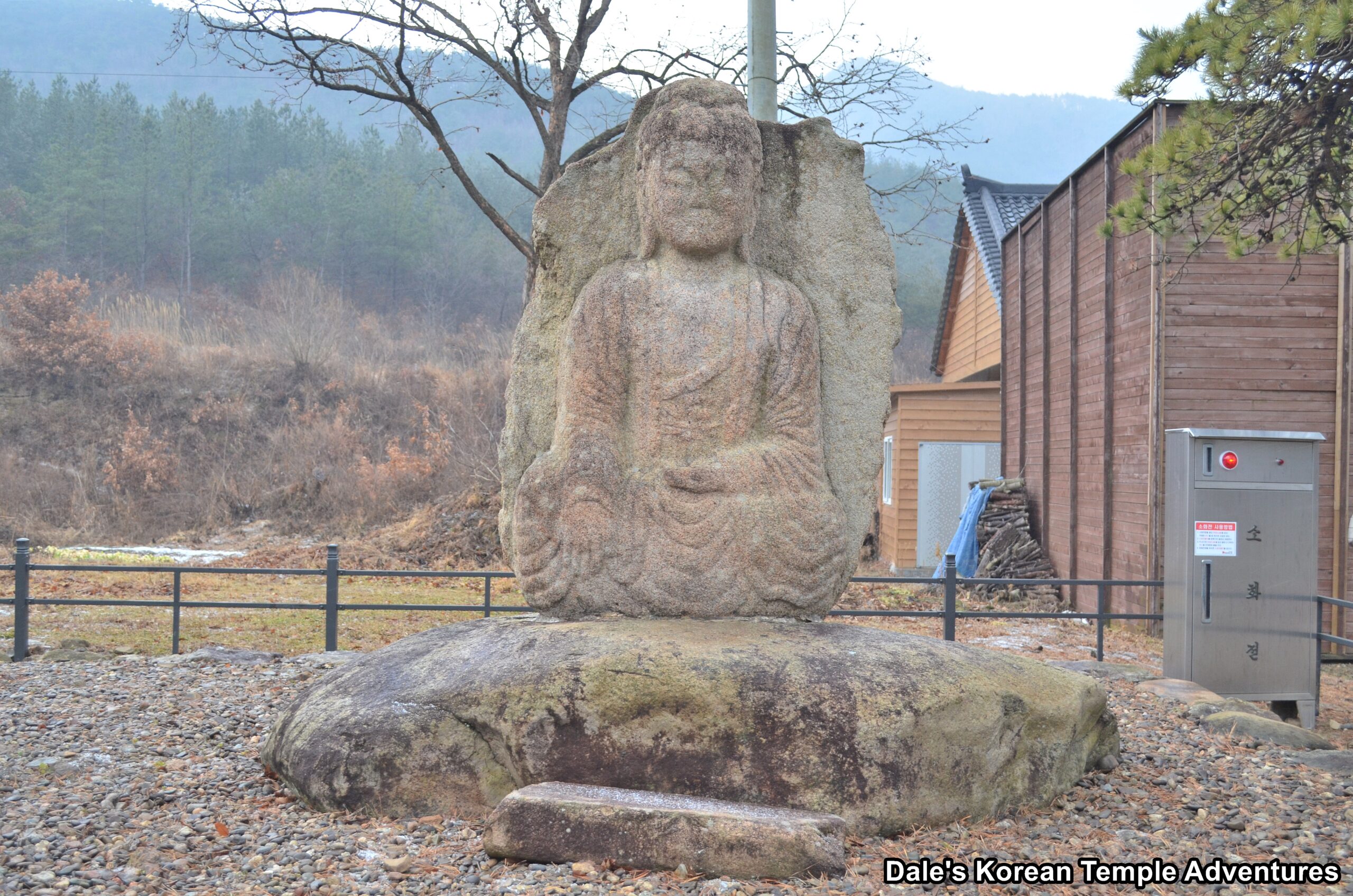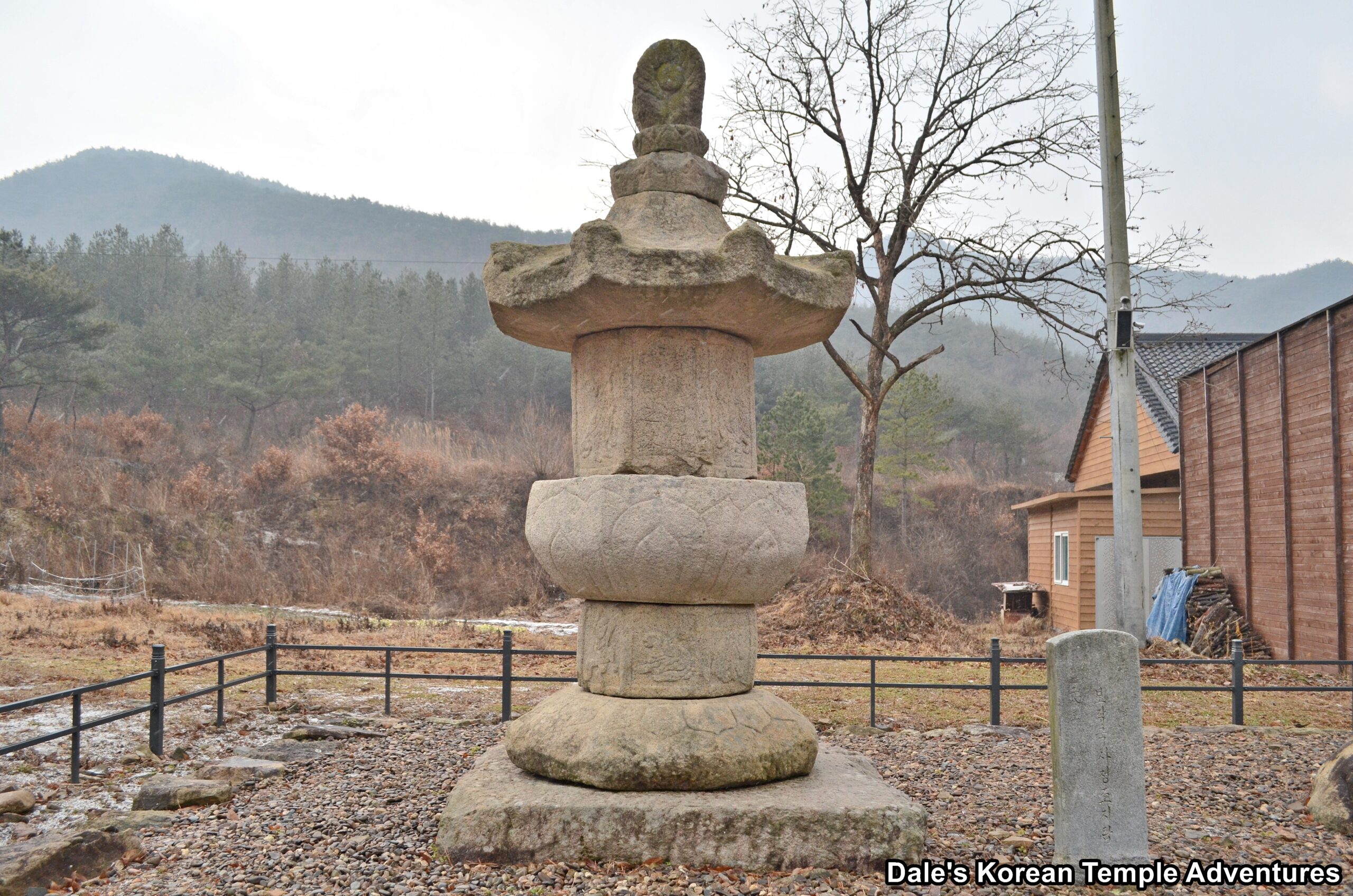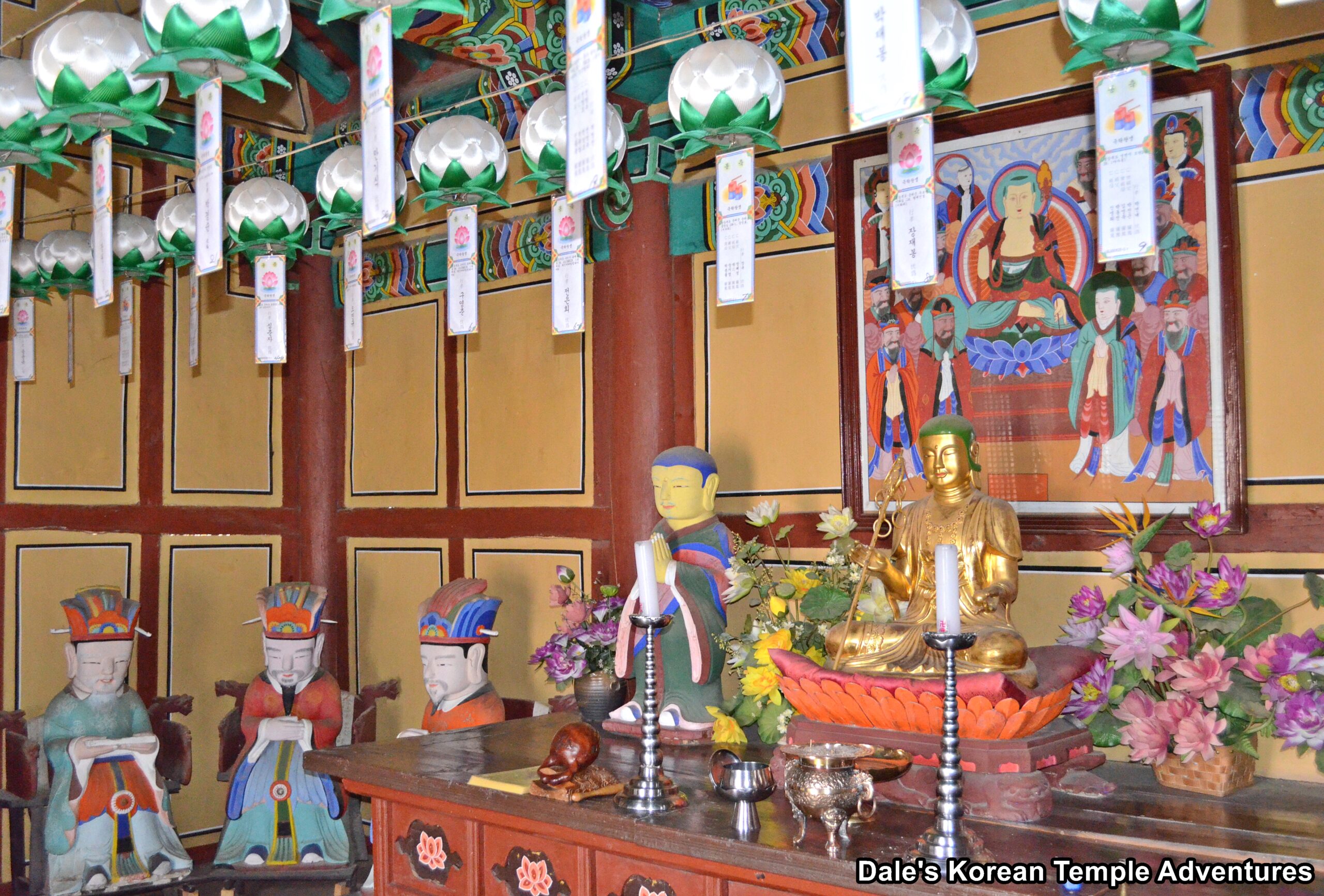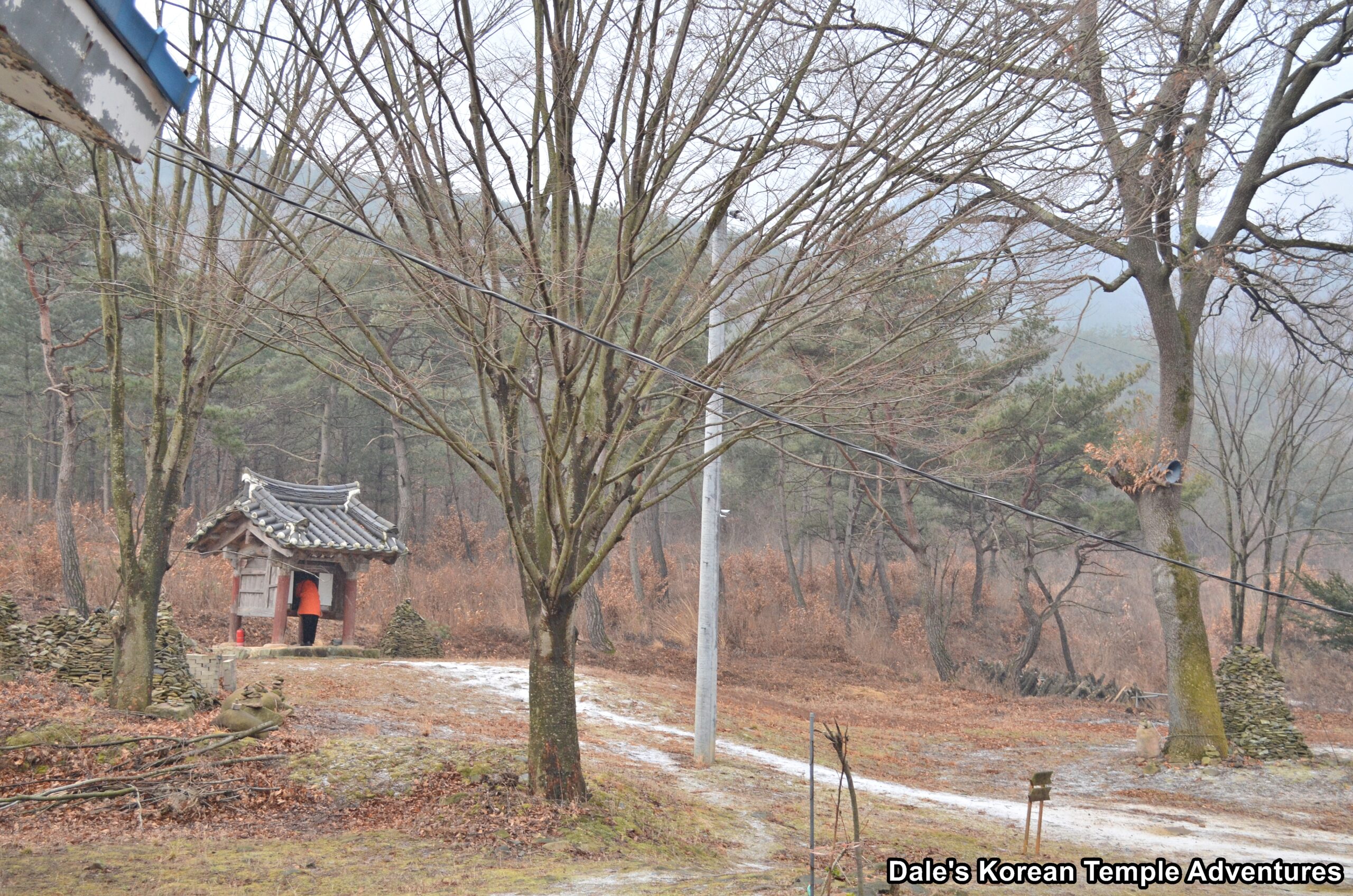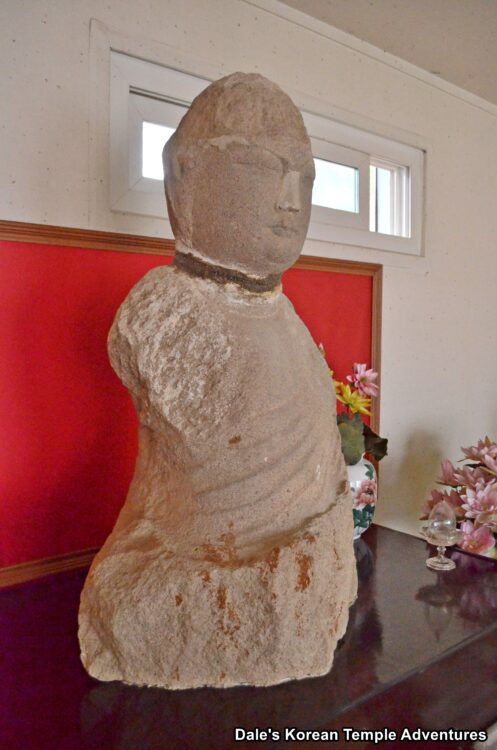Ingaksa Temple – 인각사 (Gunwi, Gyeongsangbuk-do)
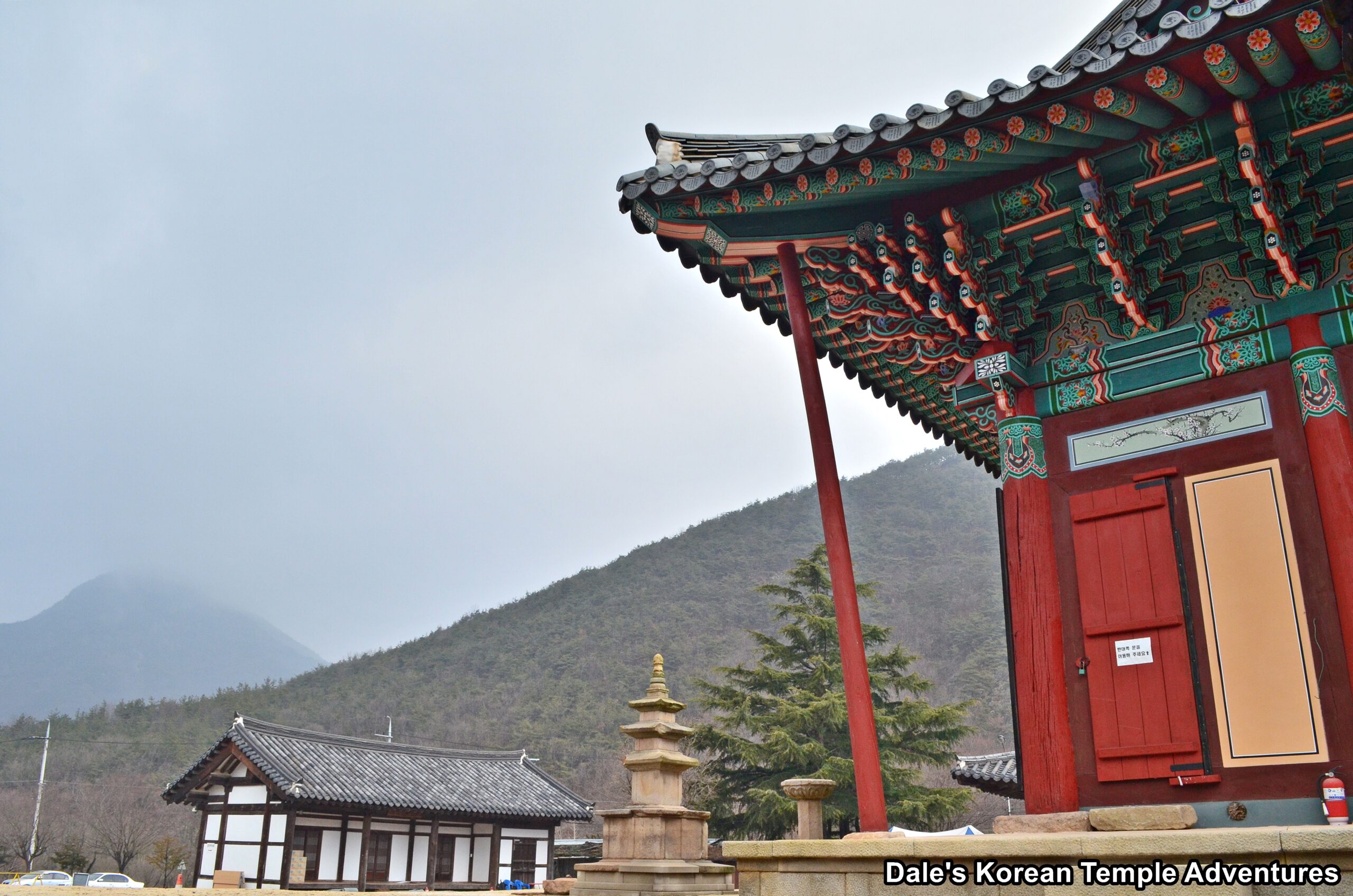
Temple History
Ingaksa Temple is located in the southeastern part of Gunwi, Gyeongsangbuk-do. The temple was first founded in 643 A.D. by the famed monk Wonhyo-daesa (617-686 A.D.). The name of the temple means “Giraffe Horn Temple” in English. More specifically, the temple is located next to the Wicheon River and Mt. Hwasan (828.1 m). Interestingly, people thought that Mt. Hwasan looked like a giraffe. And where Ingaksa Temple is located, people believed that’s where the giraffe’s horn should have been located; and hence, the temple’s name.
During the Goryeo Dynasty (918-1392), Ingaksa Temple was further expanded. And as the temple grew in size, Ingaksa Temple also grew to be one of the most prominent temples on the Korean peninsula. Also of note, Ingaksa Temple is closely associated with the famed monk Ilyeon (1206-1289) because it’s believed that he wrote the Samguk Yusa (Memorabilia of the Three Kingdoms) at Ingaksa Temple over a five year period starting in 1281. Ingaksa Temple would flourish until the mid-Joseon Dynasty (1392-1910).
There was an extensive excavation conducted at Ingaksa Temple from 1992-2009. And while there were no specifics discovered about the exact date of the temple’s founding, it’s believed that Ingaksa Temple already existed at the end of Unified Silla (668-935 A.D.). This assumption comes as a result of findings found at where the Daeung-jeon Hall was estimated to have been located.
In total, there are two Korean Treasures. One is the Stupa of State Preceptor Bogak and Stele at Ingaksa Temple, which is Korean Treasure #428. And the other, which can be found at the Central Buddhist Museum in Seoul, is the Set of Utensils Used to Contain Food Offered to Buddha at a Ritual Unearthed from Ingaksa Temple in Gunwi. As for the temple itself, it’s Historic Site #374.
Temple Layout
You first approach Ingaksa Temple in a bend in the Wicheon River. Having passed through the temple parking lot, you’ll next pass by a field with stone artifacts from the previously mentioned excavation. These stone artifacts date back to Unified Silla. Having passed by these historical items, you’ll finally enter into the large temple courtyard. Straight ahead of you is the Geukrak-jeon Hall. Out in front of this main hall is a three-story stone pagoda. This pagoda is based on a Silla Dynasty (57 B.C. – 935 A.D.) design, but the pagoda actually dates back to the early Goryeo Dynasty (18-1392). The top of the pagoda, the finial, is in good condition, while the two-tiered based has a fan-shaped bottom which supports the weight of the square body stones. The pagoda, which is officially known as the Three-Story in Ingaksa Temple, is Gyeongsangbuk-do Cultural Heritage Material #427.
As for the Geukrak-jeon Hall, the exterior walls are adorned in simple dancheong colours and a collection of colourful floral murals. Stepping inside the Geukrak-jeon Hall, you’ll find a triad of statues on the main altar centred by Amita-bul (The Buddha of the Western Paradise). This central image is joined on either side by statues of Gwanseeum-bosal (The Bodhisattva of Compassion) and Daesaeji-bosal (The Bodhisattva of Wisdom and Power for Amita-bul). To the left of this triad are a pair of paintings. The first is a Banya Yongseon-do (Dragon Ship of Wisdom Mural), and the other is dedicated to Chilseong (The Seven Stars). And hanging on the far right wall is the temple’s Shinjung Taenghwa (Guardian Mural).
To the right of the Geukrak-jeon Hall is the Guksa-jeon Hall (The State Preceptor Hall). In this case, this Guksa-jeon Hall is dedicated to Ilyeon-guksa. The exterior walls of this temple shrine hall are adorned with the Shimu-do (The Ox-Herding Murals). And housed inside this large shrine hall are a pair of murals dedicated to Ilyeon. To the rear of the Guksa-jeon Hall are a few stone artifacts. The first is a seated stone image dedicated to Seokgamoni-bul (The Historical Buddha) which dates back to the 10th to 11th century. This statue is Gyeongsangbuk-do Tangible Cultural Heritage #339. This stone statue is joined to the right by the Stupa of State Preceptor Bogak and Stele at Ingaksa Temple. It’s believed that this Korean Treasure dates back to between 1289, the date of Ilyeon’s death, and 1295. The middle octagonal stone is engraved with obscure animals, while the upper octagonal stone of the stylobate is engraved with simple lotus flower patterns. This stupa is known as “Bogak-guksa Jeongjoji-tap” in Korean, which is inscribed on the front of the main body of the stupa. The six other sides of the stupa are adorned with the Four Heavenly Kings and Boddhisattvas standing on lotus flowers. The rear image of the stupa has a door design on it.
And to the left rear of the Guksa-jeon Hall, you’ll find the accompanying stele dedicated to Ilyeon, which is also a part of the Stupa of State Preceptor Bogak and Stele at Ingaksa Temple Korean Treasure. Unlike the stupa that seems to have been well preserved, the stele has not been. The stele is in rough shape. Originally, it was erected by the monk Beopjin, who was a disciple of Ilyeon. And the inscription on the stele was composed by Minji, who was a famous writer at this time, at the command of Chungnyeol of Goryeo (r. 1274-1308). And because the stele has been so badly damaged, a copy of the stele’s inscription has been preserved at Woljeongsa Temple in Pyeongchang, Gangwon-do. It’s believed that the stele was erected in 1295.
Between the Geukrak-jeon Hall and the Guksa-jeon Hall is the temple’s Myeongbu-jeon Hall. Like the Geukrak-jeon Hall, the Myeongbu-jeon Hall is adorned in simple dancheong colours around its exterior walls. Stepping inside the Judgment Hall, you’ll find a smaller, green haired statue dedicated to Jijang-bosal (The Bodhisattva of the Afterlife) on the main altar. This statue is joined by ten smaller sized statues dedicated to the Siwang (The Ten Kings of the Underworld).
To the rear of the Myeongbu-jeon Hall, and up a slight incline, is the Sallyeong-gak Hall. This stand-alone shrine hall houses a fading mural dedicated to Sanshin (The Mountain Spirit). And the final shrine hall that visitors can explore at Ingaksa Temple is the Mireuk-dang Hall, which is a modern building. Housed inside the Mireuk-dang Hall is a damaged image of Mireuk-bul (The Future Buddha). The damaged image of Mireuk-bul rests all alone on the main altar. The statue is believed to date back to Unified Silla (668-935 A.D.). It was found during the extensive excavation that took place from 1992-2009. It was found in the middle of a field about 60 metres from the main temple grounds. It’s right arm has been lost, and some of its facial features have been damaged. The statue, which is officially known as the Seated Stone Buddha in the Maitreya Shrine at Ingaksa Temple, is Gyeongsangbuk-do Tangible Cultural Heritage Material #426.
And no trip to Ingaksa Temple would be complete without a visit to the museum. This museum is located at the front of the temple grounds.
How To Get There
From the Gunwi Intercity Bus Terminal, you’ll need to board a bus that reads “Gunwi-Nakjeon, 군위 – 낙전” on it. You can take this bus or the “Gunwi – Hakam, 군위 – 학암” bus. Either bus ride will last about an hour, or 21 stops. You’ll need to get off at the “Hwabuk 1-ri – 화북 1리” stop. From where the bus drops you off, you’ll need to walk an additional 900 metres, or 15 minutes, to get to Ingaksa Temple.
And if public transportation isn’t your thing, you can simply take a taxi from the Gunwi Intercity Bus Terminal. The taxi ride will take about 35 minutes, and it’ll cost you around 25,000 won (one way).
Overall Rating: 7/10
Ingaksa Temple has one of the more storied pasts. First, it was founded by Wonhyo-daesa, and then it was the temple where Ilyeon wrote the Samguk Yusa (Memorabilia of the Three Kingdoms). It’s also the final resting place of the earthly remains of the famed monk, as well. There’s a beautiful stupa that houses these remains and a damaged stele that records the monk’s life. Other interesting features to Ingaksa Temple is the Goryeo-era pagoda out in front of the Geukrak-jeon Hall, the Guksa-jeon Hall, and the various stone artifacts from the extensive excavation conducted at the temple. While this temple is lesser known, it’s definitely worth a visit, especially if you’re interested in the history of Korean Buddhism.
